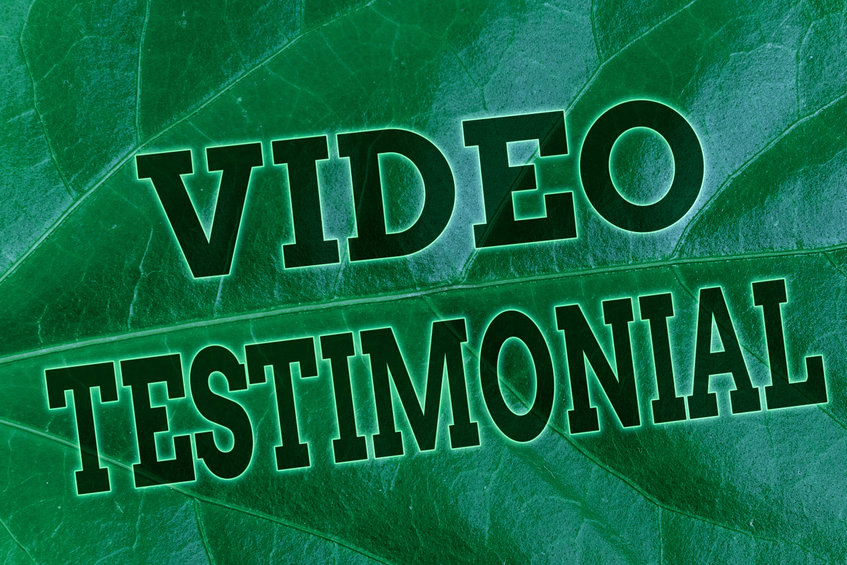
When it comes to making a purchase decision, potential customers want to know what current customers think. In fact, nine out of 10 people say they trust what a customer says about a business more than what that business says about itself. When customers share their experiences, it creates social proof that helps brands attract viable prospects, showcase what a company can do and shorten the sales cycle. And one of the best ways to utilize customer opinions is through video testimonials.
The Science Behind Video Testimonials
Customer testimonials offer an authentic and candid perspective rather than promotional hype. Video testimonials, in particular, put a face to the name and let customers speak in their own voice about their own experiences. This sparks a natural emotional connection. Moreover, emotions are known to be mediated by a process called the mirror-neuron mechanism. Mirror neurons fire when we perform an action, but also when we watch someone else perform an action. When we watch a video, our brain naturally creates an emotional response that mirrors what we see. This allows prospects to easily relate and picture themselves in that client’s shoes. To learn more about a company, product or service, 79 percent of people have watched a video testimonial. In addition, 77 percent of the same survey group who have watched a brand’s testimonial video say it played a part in convincing them to buy the product or service.
Best practices for video testimonials

The effectiveness and emotional response of videos are clear. But how do you ensure your video testimonials create the response you seek? Consider the following four best practices in implementing your video testimonial strategy:
- Develop a system to request and attract powerful video testimonials. Testimonials, especially video testimonials, typically do not appear on their own. Instead, create a proactive strategy to curate testimonials. Be sure to follow up with a customer while the impact of your product or service is still fresh in their minds. An automated survey or email can be an effective way to identify those customers who might be willing to provide a video testimonial. Then, reach out with a personal message or phone call, especially to those customers who have tackled big challenges and experienced success with your products and services. Long-term customers also are an excellent source.
- Provide thought-provoking questions that offer guidance, focus on benefits and let the customer take the reins. The most effective video testimonials highlight genuine customer challenges and facilitate an authentic connection with prospects. Ask questions that help your customers communicate what the experience was like in terms of doing business with your company and the benefits they received. The goal is to deliver messaging that provides value to others who are considering your company as a business partner or supplier. A few customer-centric questions to ask include:
- What challenge were you looking to solve before finding us?
- How did our product/service help you achieve your goals?
- What product/service feature or benefit do you enjoy the most?
- What do you like most about working with our company?
- How much money or time did you save?
- Is there anything else you think others should know?
- While you might want to edit the content in a way that is brand-aligned, first and foremost, showcase the customer. Viewers or visitors are looking to hear from your customer, not your brand. To achieve balance, some companies include quick introductions or closing thoughts from executives or other stakeholders. Remember, however, to keep video testimonials short and sincere. The attention span for viewers is not long. In fact, 74 percent of B2B customers are willing to spend only 10 minutes or less watching video content, while 44 percent won’t spend more than five minutes.
- Strategically position video testimonials on your website and distribute them across the channels that reach your prospects. Creating effective video testimonials is the first step. Next, position videos where prospects can find them. Video has significant benefits over written content. They require less physical space on a webpage but include a depth of content without making the reader scroll. In addition, video is eye-catching and highly shareable. Consider places on your website where a video testimonial can make an impact, such as your homepage, about us, contact, sliders, product or pricing catalog, and landing pages. Then distribute the videos across other channels such as social media, email campaigns, digital advertising, or attached to blogs, case studies or white papers.
Showcase Relationships to Build Relationships

It doesn’t matter about the size of a purchase. Most buyers instinctively look for reassurance that someone else with a similar challenge has experienced success with the product or service before making the leap. It’s the way humans are wired. We want reassurance about our purchasing decisions. Video testimonials help alleviate the fear of making a mistake and instill trust, respect and confidence with potential buyers. Equally important, with video testimonials, there’s a personal touch and connection that matters. In the end, when you spend a lot of time, energy and resources building relationships with your customers, it has the power to create entirely new connections. And that’s worth showing off!
